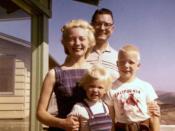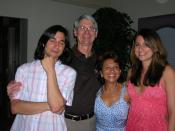Is 'the family' in decline? Is it more accurate to say that families are simply responding to changes in gender equality and the nature of work, greater affluence and higher rates of geographical mobility?What has happened to the family in the last few decades? And what are these changes doing to our children? There is some worry that, in the present day the family is failing to do its 'job' properly. As a consequence of these events,The normal familyThe nuclear family is often represented as the 'normal' family. This consists of two married parents with two children, with one parent at home (REF). This type of family make up 75% of families (Bureau of Statistics 2002). Added to this is de-facto relationships which add another 9% and another 15% which are sole parent families and another 1% taking other forms (Bureau of Statistics 2002). A major factor in looking at family composition is the distinction between households and families.
For statistical collection purposes, the Australian Bureau of Statistics defines family as two or more persons living in the same household who are related to each other by blood, marriage, de facto partnering, fostering or adoption (Bureau of Statistics 2002).
Around the 50s, most people lived in the nuclear family. The nuclear family operated under the assumptions that women should stay home, men should be the providers, and the children were to be protected (REF). Then many events changed us, like World War II, the atomic bomb, the Holocaust, then later the Women's Rights movement and the Civil Rights movement. These events and their consequences challenged our basic ideas about how the world works.
The Postmodern FamilyAs the economy changed, more families needed additional income. The postmodern family emerged. The postmodern family includes a broad range of flexible structures, single parent...



A-
Your in-text referencing is great! But you do not have all of your references listed in the bibliography. For example, the Bureau of Statistics 2002 is not mentioned in your works cited list.
Besides that, great essay!!
0 out of 0 people found this comment useful.